Do not forget the boys – gender differences in children living in high HIV-affected communities in South Africa and Malawi in a longitudinal, community-based study
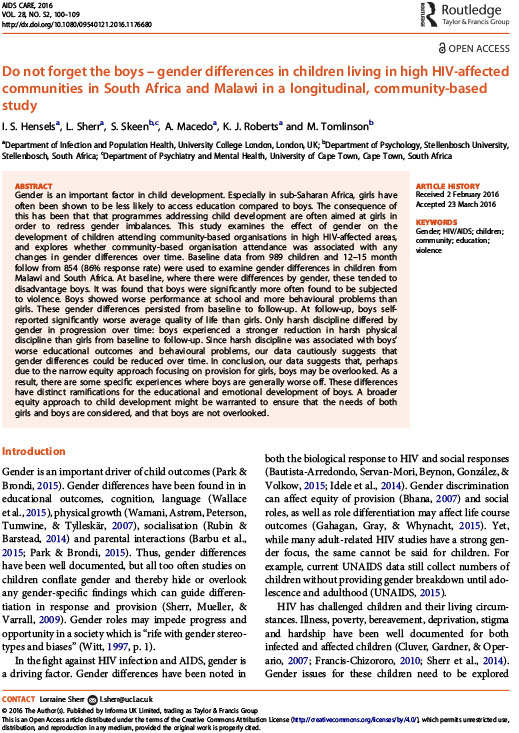
Gender is an important factor in child development. Especially in sub-Saharan Africa, girls have often been shown to be less likely to access education compared to boys. The consequence of this has been that that programmes addressing child development are often aimed at girls in order to redress gender imbalances. This study examines the effect […]
Development of a National Campaign Addressing South African Men’s Fears About HIV Counseling and Testing and Antiretroviral Treatment
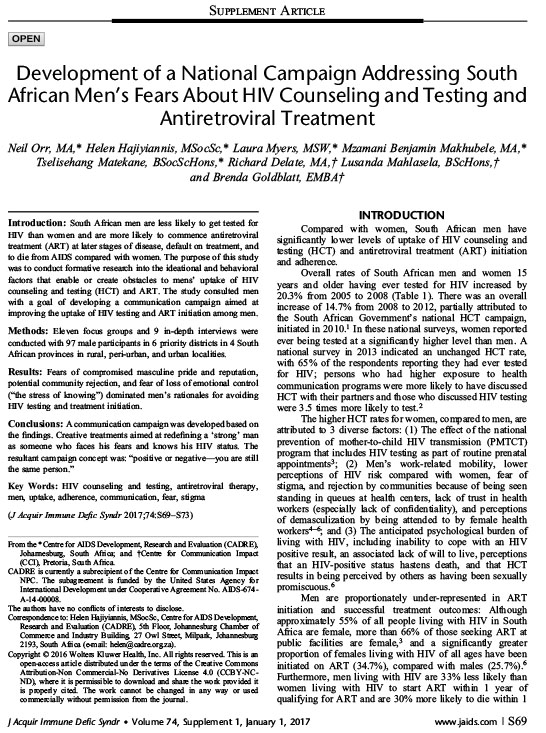
South African men are less likely to get tested for HIV than women and are more likely to commence antiretroviral treatment (ART) at later stages of disease, default on treatment, and to die from AIDS compared with women. The purpose of this study was to conduct formative research into the ideational and behavioral factors that […]
Reframing the approach to heterosexual men in the HIV epidemic in sub-Saharan Africa

Despite the body of evidence on heterosexual men’s inequitable access to HIV prevention, testing and antiretroviral therapy (ART), and poorer viral suppression in sub-Saharan Africa (SSA), public health responses to address this gap remain surprisingly sparse. Gender stereotypes prevail, implicitly blaming men for infecting women with HIV, and for their own health outcomes due to […]
HIV and key populations
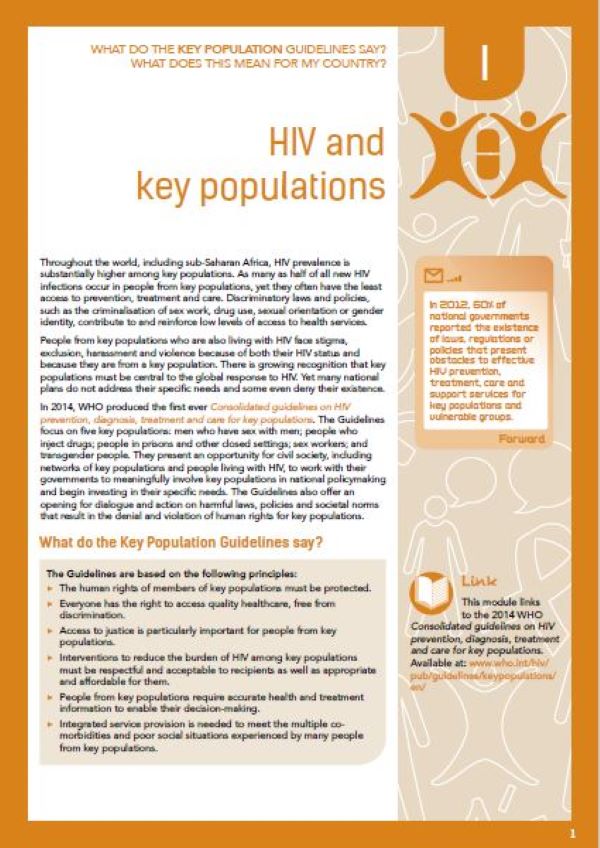
This document summarises the 2014 WHO Consolidated guidelines on HIV prevention, diagnosis, treatment and care for key populations and outlines what this means at the country level.
Differentiated care for HIV: A Decision framework for differentiated antiretroviral therapy delivery.
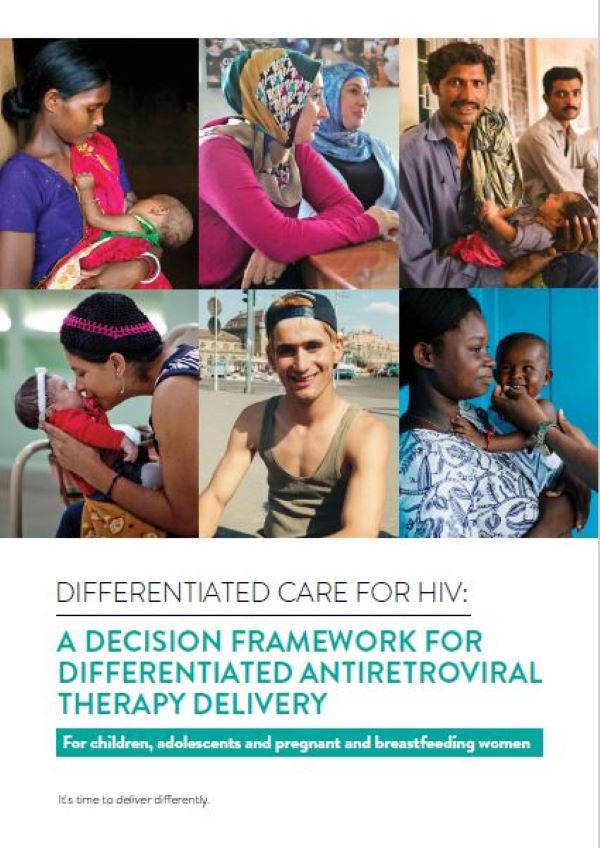
This document shows how differentiated care for ART delivery is needed for children, adolescents and pregnant and breastfeeding women.
I have two healthy hands
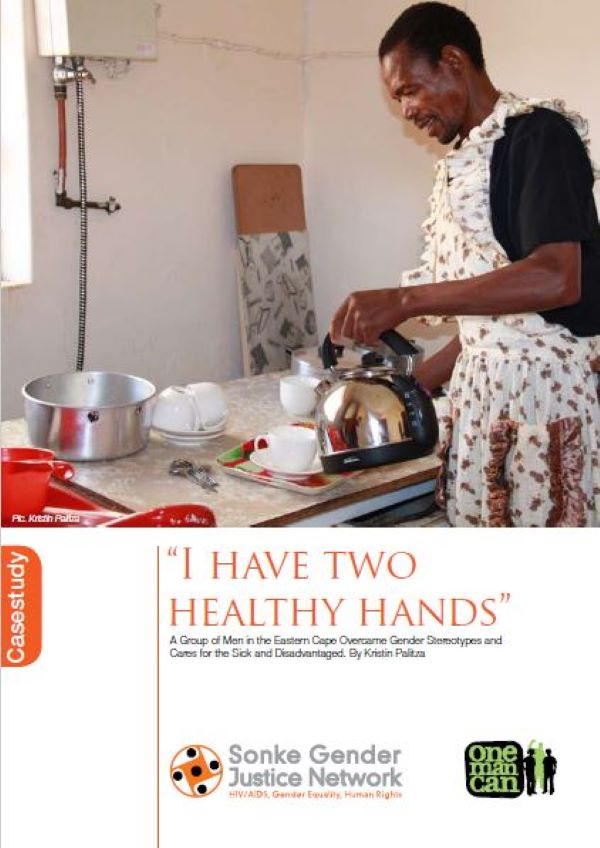
A case study about how a group of men in the Eastern Cape overcame gender stereotypes and care for the sick and disadvantaged.
Implementing Comprehensive HIV/STI Programmes with Sex Workers: Practical approaches from collaborative interventions

This document sets out technical recommendations on effective interventions for the prevention and treatment of HIV and other sexually transmitted infections (STIs) among sex workers. It also contains examples of good practice from around the world that may support efforts in planning programs and services and describes issues that should be considered and how to […]
Implementing Comprehensive HIV and STI Programmes with Men Who Have Sex with Men: Practical guidance for collaborative interventions
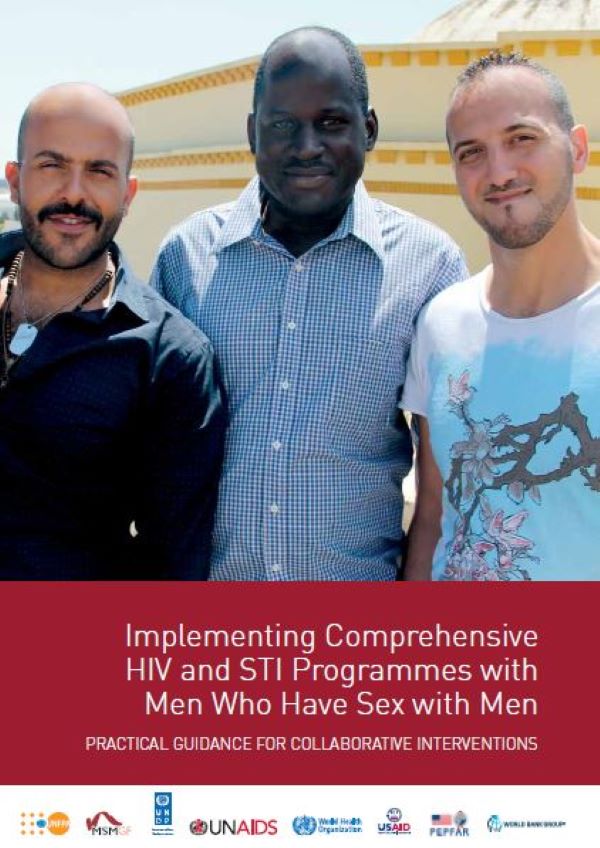
This document sets out technical recommendations on effective interventions for the prevention and treatment of HIV and other sexually transmitted infections (STIs) among men who have sex with men. It also contains examples of good practice from around the world that may support efforts in planning programs and services and describes issues that should be […]
HIV and adolescents: HIV testing and counselling, treatment and care for adolescents living with HIV
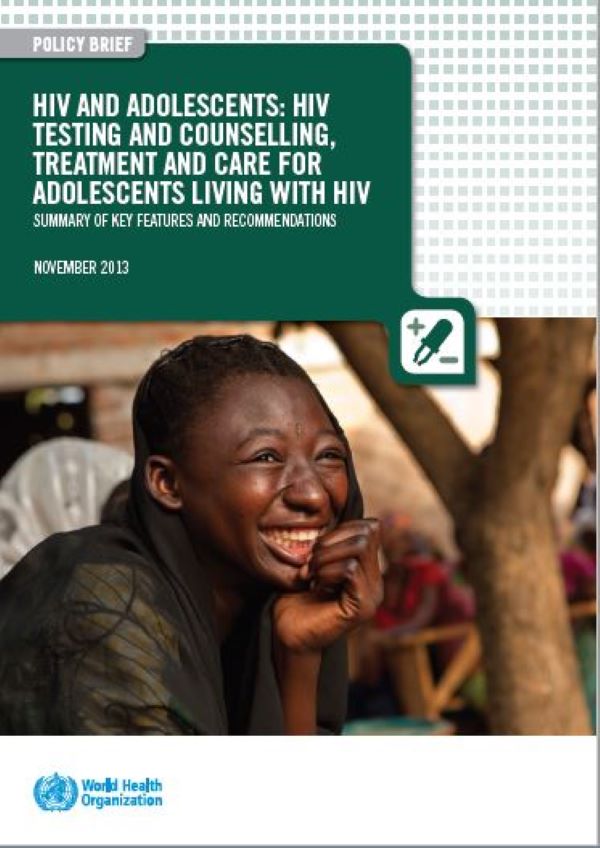
This brief summarises the key features and recommendations from the Adolescent HIV guidelines. The Adolescent HIV guidelines emphasize the necessity to consider the range of adolescent needs and circumstances when planning HIV testing and counseling services and developing strategies for providing services that can help increase adherence to treatment and retention in care.
Consolidated guidelines on HIV prevention, diagnosis, treatment and care for key populations

In this new consolidated guidelines document on HIV prevention, diagnosis, treatment and care for key populations, the World Health Organization (WHO) brings together all existing guidance relevant to five key populations – men who have sex with men, people who inject drugs, people in prisons and other closed settings, sex workers and transgender people.


